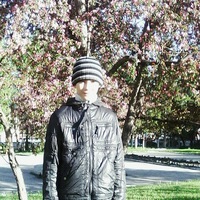
по каким признакам семена однодольных растение отличаются от семян двудольных и из чего они
состоят? 0
0
 0
0
Ответы на вопрос
 Внимание! Ответы на вопросы дают живые люди. Они могут содержать ошибочную информацию, заблуждения, а также ответы могут быть сгенерированы нейросетями. Будьте внимательны. Если вы уверены, что ответ неверный, нажмите кнопку "Пожаловаться" под ответом.
Внимание! Ответы на вопросы дают живые люди. Они могут содержать ошибочную информацию, заблуждения, а также ответы могут быть сгенерированы нейросетями. Будьте внимательны. Если вы уверены, что ответ неверный, нажмите кнопку "Пожаловаться" под ответом.

Ответ:
однодольные:
корневая система мочковатая
жилкование простое
нет чашелистика
кол во лепестков: 5-6
одна семядоля
эндосперм
двудольные:
в корневой системе можно выделить главный корень
жилкование просто и сложное
5 лепестков
есть чашелистик
две семядоли
нет эндосперма
 0
0
 0
0

Differences between Monocot and Dicot Seeds
Monocotyledonous (monocot) and dicotyledonous (dicot) plants are two major groups of flowering plants. They differ in various aspects, including the structure and composition of their seeds. Here are the key differences between monocot and dicot seeds:
1. Number of Cotyledons: - Monocot seeds have a single cotyledon, which is the embryonic leaf inside the seed. - Dicot seeds have two cotyledons.
2. Seed Structure: - Monocot seeds typically have a single seed coat, which protects the embryo. - Dicot seeds usually have two seed coats, an outer one called the testa and an inner one called the tegmen.
3. Embryo Structure: - In monocot seeds, the embryo consists of a single embryonic leaf (cotyledon), an embryonic stem (plumule), and an embryonic root (radicle). - Dicot seeds have two cotyledons, an embryonic stem, and an embryonic root.
4. Endosperm Presence: - Monocot seeds often have a significant endosperm, which is a nutrient-rich tissue that provides nourishment to the developing embryo. - Dicot seeds may or may not have endosperm. Some dicots store nutrients in the cotyledons themselves.
5. Seed Size and Shape: - Monocot seeds are usually smaller and more uniform in size and shape. - Dicot seeds can vary significantly in size and shape, depending on the plant species.
6. Examples: - Examples of monocot seeds include corn, wheat, rice, and lilies. - Examples of dicot seeds include beans, peas, sunflowers, and apples.
Composition of Monocot and Dicot Seeds
The composition of seeds can vary depending on the plant species. However, in general, both monocot and dicot seeds consist of the following components:
1. Seed Coat (Testa): - The seed coat is the outer protective layer of the seed. It helps prevent desiccation and protects the embryo from external damage.
2. Embryo: - The embryo is the young plant that develops from the fertilized ovule. It consists of the cotyledon(s), embryonic stem (plumule), and embryonic root (radicle).
3. Endosperm: - The endosperm is a nutrient-rich tissue that surrounds the embryo in some seeds. It provides nourishment to the developing embryo during germination.
4. Cotyledon(s): - Cotyledons are the embryonic leaves of the plant. They can store nutrients and provide energy for the developing seedling during germination.
5. Radicle: - The radicle is the embryonic root of the plant. It is the first structure to emerge during germination and anchors the seedling in the soil.
It's important to note that the specific composition and structure of seeds can vary among different plant species. The information provided here represents general characteristics of monocot and dicot seeds.
 0
0
 0
0
Похожие вопросы
Топ вопросов за вчера в категории Биология
Последние заданные вопросы в категории Биология
-
Математика
-
Литература
-
Алгебра
-
Русский язык
-
Геометрия
-
Английский язык
-
Химия
-
Физика
-
Биология
-
Другие предметы
-
История
-
Обществознание
-
Окружающий мир
-
География
-
Українська мова
-
Информатика
-
Українська література
-
Қазақ тiлi
-
Экономика
-
Музыка
-
Право
-
Беларуская мова
-
Французский язык
-
Немецкий язык
-
МХК
-
ОБЖ
-
Психология
-
Физкультура и спорт
-
Астрономия
-
Кыргыз тили
-
Оʻzbek tili



























